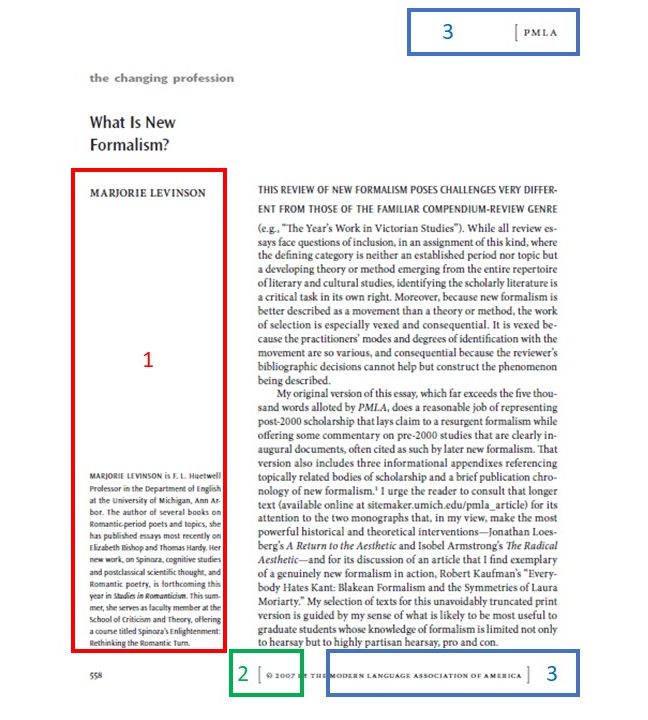Chapter 7: Skimming and Scanning
Patricia Williamson
Skimming
Skimming is when we sample parts of the text in order to gain a general understanding or a quick sense of a text’s value. Skimming enables us to get a quick overview of a text, without reading it in full or in depth.
Meaning or focus can be found in a variety of places. To skim effectively for overall sense of a text, run your eyes over the text looking at:
- titles
- headings
- sub-headings
- emphasized text (bold, italics, underlines, ALL CAPS)
- figures
- tables
- images
- bullet points
- key words
Introductions and conclusions often explicitly state the overall argument of a text or its findings. Similarly, you might read the first sentence of each paragraph: good topic sentences will tell you the key idea of each paragraph.
To establish a text’s value in an academic context, you can quickly look at:
- The authors and their affiliations: if you know the key names and research centers in an area of study, you may be able to determine quickly if the paper is by an influential scholar or institution (and may have more currency in a field of study).
- The date: more-recent articles will often review previous research, helping you to locate other important work that preceded them. Dates can also tell you roughly the relevance of the article to today’s academic community.
- The publisher: some journals are more well-known or read or they have a higher impact factor in a field of study.
Skimming is a time-saving beginning to reading, but it should not replace in-depth reading. Rather, skimming allows you to determine if a text is worth reading in-depth. Through skimming, you will quickly build an overview of the main ideas in the text, which is particularly important if you are unsure of the applicability of the text and you have a lot of reading to do. Skimming will help you to determine whether a text is useful for a research assignment or worth further in-depth reading. In-depth reading and research will take up a great deal of your time as a university student; ensure that you spend your time on worthwhile pursuits.
You may find the exercise in the University of Melbourne video below helpful to solidify these concepts.
Scanning
When you scan a text, you are looking for specific words or representative phrases. This technique helps you discover specific information in a text (source) quickly.
Perhaps you’re thinking “I can just use the ‘ctrl F’ shortcut on my computer keyboard and type in the key word or phrase I’m searching for”. While this is true, many exams are paper only and you will require the capacity to identify answers within the text quickly.
Firstly, determine the key words you are searching for, so you know what to focus on.
Then, quickly and systematically scan across and down the page from left to right, top to bottom. If you are searching for data, scan the page for numbers and percentages and look at tables and graphs also. If you are searching for a key word, think of it as a whole word, don’t just look for the first letter of the word (like a word search puzzle).
You may need to complete a second or third pass over the material to identify what you are looking for. Therefore, it makes sense to use the skimming technique first to identify key sections of the text where you may find the relevant information you are seeking.
Again, you may find the exercise in the University of Melbourne video below helpful to solidify these concepts.
Media Attributions
- title page © Marjorie Levisnson is licensed under a All Rights Reserved license
A colloquial term used to describe individuals with whom we interact that use more of our emotional resources when interacting with people, which often causes an increase in our levels of stress.


